As the COVID-19 pandemic continues to wreak havoc worldwide, various data sources suggest that in India the recovery rate of COVID-19 is over 70% as of August 23, 2020. India currently has almost 2.4 million patients who have recovered from COVID-19. However, an important question still looms large – Does a COVID-19 survivor recover completely after hospital discharge?
The SARS-CoV-2 virus primarily affects the respiratory system and can cause life-threatening pneumonia. Current research shows the disease attacks more than just the respiratory system, affecting multiple organs with blood clots and inflammation. Almost 80% of COVID-19 infections are mild or asymptomatic, 15% are severe infections requiring oxygen and 5% are critical infections, requiring ventilation.
Several COVID-19-recovered patients are returning to doctors with conditions including breathlessness, cardiac, lung, and other complications. According to a newly published study from Italy, many patients with even milder forms of COVID-19 have persistent symptoms of fatigue and difficulty breathing for up to 60 days post-infection. Furthermore, researchers of this Italian study report that almost 43% of recovered patients have worsened quality of life and almost 87% of recovered patients have at least one persistent symptom even after two months of their recovery from the disease.
Post-recovery, some COVID-19 patients may continue to face a range of health issues, depending on the severity of the disease they explained earlier. There is limited evidence regarding long-lasting COVID-19 symptoms after the infection is gone. However, there have been reports of individuals still experiencing symptoms months after the infection, including continued loss of taste or smell, irregular heartbeats, chest pain, shortness of breath, extreme fatigue, learning difficulties, and recurring fever.

It is to be noted that not all recovered patients report long-term complications. Post-COVID-19 patients who developed acute respiratory distress syndrome (ARDS) could have a higher risk of long-term health issues.
Some other complications of “long-covid” include fatigue, myalgias (muscle pain), arthralgias (joint pain), cognitive impairment, depression or anxiety, a consultation is advised if you experience any such symptoms.
Dr. Ashish Bajaj – M.B.B.S, M.D.
Post-COVID-19 patients may experience persistent respiratory symptoms, fatigue, decreased functional capacity and decreased quality of life up to 6 months after infection. People who had severe illness with COVID-19 might experience organ damage affecting the heart, kidneys, skin and brain. Inflammation and problems with the immune system can also happen.
Dr. M.G. Kartheeka, MBBS, MD
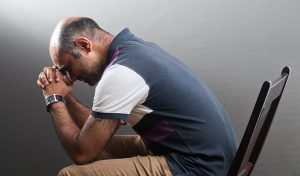
By adhering to government and local health regulatory guidance and continuing with these safety precautions, we all need to do our part to make sure the COVID-19 virus comes to an end.
It is very important for all of us to take health and safety precautions concerning COVID-19 seriously. With the reopening of businesses and public facilities, many cities are reporting an increase in the number of daily COVID-19 confirmed cases.
Disclaimer: The information provided here is for educational/awareness purposes only and is not intended to be a substitute for medical treatment by a healthcare professional and should not be relied upon to diagnose or treat any medical condition. The reader should consult a registered medical practitioner to determine the appropriateness of the information before consuming any medication. PharmEasy does not provide any guarantee or warranty (express or implied) regarding the accuracy, adequacy, completeness, legality, reliability, or usefulness of the information; and disclaims any liability arising thereof.
Links and product recommendations in the information provided here are advertisements of third-party products available on the website. PharmEasy does not make any representation of the accuracy or suitability of such products/services. Advertisements do not influence the editorial decisions or content. The information in this blog is subject to change without notice. The authors and administrators reserve the right to modify, add, or remove content without notification. It is your responsibility to review this disclaimer regularly for any changes.
Russia’s Gamaleya National Research Center for Epidemiology and Microbiology began human trials on their COVID-19 vaccine in June. In July, the chief researcher claimed that the trials had been concluded and they were completely successful. On
11th August, Russia announced that the vaccine has been approved, it is ready and the first batch will be rolled out towards the end of August. Mass vaccination will start in the upcoming months in Russia. The vaccine has been named Sputnik V after the Sputnik 1- the first satellite ever to be launched from Earth (launched by the former USSR).
Initially, as expected, the common people around the world were excited. The pandemic has claimed far too many lives and has brought immense hardships to our lives. And if finally, a country has produced the much-needed vaccine, shouldn’t that be a cause for celebration?
The experts don’t agree. Most countries of the world are not jubilant about Russia’s new vaccine and politics has nothing to do with it.
Medical and healthcare experts have actually raised an alarm that the vaccine would not be safe for use. The simple reason why they are not happy is – the vaccine production was rushed.

Russia started human trials in June and they claimed in August that the vaccine was ready. According to experts, this was impossible as Human trials take more than 1-2 months for completion.
Another reason why experts are worried is that Russia did not even conduct the 3rd phase of human trials. The health crisis caused by coronavirus is severe. But that is no excuse to hurriedly wrap up human trials and forgo the 3rd phase. This could lead to a fresh round of health complications if people’s bodies cannot accept the new vaccine. Experts feel that to end coronavirus, Russia is about to do something that could endanger the lives of thousands of people.
Although India has not made any public announcements regarding the Russian vaccine, India’s silence on this matter can be seen as a sign of disinterest in Sputnik V. Medical professionals in India are of the same opinion as their international colleagues. They feel that the vaccine may not be suitable for use.
But there is no need for Indians to despair. Even if we don’t start vaccinating in September or October like Russia, our own vaccine may not be that far off.

1. Covaxin which is being produced by Bharat Biotech, Indian Council of Medical Research (ICMR) and National Institute of Virology (NIV).
2. ZyCOV-D which is being produced by Zydus Cadila.
On top of that, we are collaborating with Britain on their Oxford-AstraZeneca vaccine. This vaccine too is in its trial phase in India and has shown a lot of promise.
So, let us be hopeful! The medical community is working round the clock to get a safe COVID-19 vaccine in the market. In the meanwhile, we can prevent the further spread of the infection by maintaining proper social distancing, practicing sanitization and self-hygiene and going out only when absolutely necessary.
Is your life the same now as it was before COVID-19 struck? We are sure the answer is ‘no.’ The pandemic and the resulting lockdown has changed our lives in more ways than we can count. We’re all enduring some hardships, be it physical, psychological, or financial.
Recently, it has come to light that COVID-19 has made an unpleasant impact on certain aspects of women’s health. More women than ever before are suffering from period-related problems. Do you know someone who has been complaining about new problems in her menstrual cycle? Or are you experiencing these problems yourself? Read on to know why this is happening.
A woman (from her puberty to menopause) gets her period once every month. The time between one period to the next is called her menstrual cycle. The length of the cycle is not fixed. It usually varies from 22-35 days.
Many women ask, what is an irregular period?
Suppose your cycle length is 28 days, then your new period should always come after 28 days from the date of your last period. If there is a delay or your period doesn’t arrive in upto 35 days, then it’s a sign that your periods are delayed. If this keeps happening every month, you have irregular periods. At the same time, other symptoms such as irritation, soreness in the breasts, cramps, and hot flashes may show up.
Doctors have reported a 25% rise in the number of women suffering from irregular periods and menstrual problems since the lockdown was implemented. But how is the nationwide lockdown linked to period problems? Let us understand why.

Stress levels are higher than ever before. Women these days are dealing with a lot of responsibilities all at once. Household work, office work, childcare, and homework are taking a toll on their psychological health. Burnout and mental exhaustion have become common. Add to that, she is constantly worrying about the health and wellbeing of her loved ones. Stress creates excess amounts of the hormones prolactin and cortisol. They hamper the normal oestrogen-progesterone cycle that regulates her periods.
Gyms are mostly closed. Since women are hardly going out, they are not getting much exercise. Mostly, women are so exhausted by their stressful lives that they barely have time to work out. Exercising releases endorphins and serotonin (happiness hormones) that counter stress hormones and keep her periods regular and pain-free.
This too, is linked to stress. Women are bingeing on unhealthy fried fast foods to cheer themselves up and combat stress. Fatty junk foods like burgers, pasta, rolls, and fries contain saturated fatty acids that disturb her oestrogen-progesterone secretion.
Doctors say that the solution is quite simple.
Exercising is a must. No matter how tired you are, you have to find at least 20 minutes to work out daily. Simple home exercises like full body stretches, jumping rope, squats, sit-up, spot jogging will trigger the production of happiness hormones. Exercise and being physically active will increase blood supply to the ovaries and activate them. They will produce the oestrogen and progesterone needed for timely periods.

Avoid fast foods. Add green vegetables, fresh fruits, dairy products, lentils, and nuts in your diet. Include ginger, dark chocolate, turmeric in your diet as they are beneficial for the ovaries and can reduce period-pain.
This is more difficult than the other two. But it is very doable. To deal with stress, start practising meditation. Sit in a quiet place and try to empty your head of all thoughts. You can also practise alternate nostril breathing which immediately calms you down. Dedicate at least 15 minutes a day to this practice.
You can also listen to classical music and read literature- both of which are famous for relaxing the mind and body.
Stress is your body’s worst enemy. Just remember, this too shall pass. You are not alone; you have your loved ones to help you overcome the crisis. Focus on a healthy diet, exercising and do the things that make you happy. Remain at home to stay safe.
Disclaimer: The information provided here is for educational/awareness purposes only and is not intended to be a substitute for medical treatment by a healthcare professional and should not be relied upon to diagnose or treat any medical condition. The reader should consult a registered medical practitioner to determine the appropriateness of the information and before consuming any medication. PharmEasy does not provide any guarantee or warranty (express or implied) regarding the accuracy, adequacy, completeness, legality, reliability or usefulness of the information; and disclaims any liability arising thereof.
Links and product recommendations in the information provided here are advertisements of third-party products available on the website. PharmEasy does not make any representation on the accuracy or suitability of such products/services. Advertisements do not influence the editorial decisions or content. The information in this blog is subject to change without notice. The authors and administrators reserve the right to modify, add, or remove content without notification. It is your responsibility to review this disclaimer regularly for any changes.
Community transmission of COVID-19 is the greatest threat facing humanity right now. As it is, the pandemic is becoming more dangerous and if community transmission is confirmed, then things may get out of hand.
So what is community transmission? Well, It is the third stage of a pandemic. It means the infected person did not catch the virus from someone he/she knows who has been diagnosed with COVID-19. So, he/she got COVID-19 in a certain area that they live in. They did not get infected due to travelling to some other location or from a different country.
So has community spread started in India? Read on to know more.
In the first phase, when you know that the illness came from another country, certain measures like halting international travel or movement across the border can stop further spread. Contact tracing will reveal whom the infected people mingled with and everyone would be quarantined.

But in the next stage of local transmission, it becomes impossible to know who or where a person contracted the infection. It could be a neighbour, a fellow traveller, anyone in the country, state or city. And the same infected person could spread the infection to countless people who in turn would infect anyone they come in contact with. No amount of restrictions or hygiene would be able to restrict the spread.
The curve would shoot up and healthcare services would be overwhelmed. In the absence of proper medical attention, people with comorbidities may succumb and the fatality rate of COVID-19 would go up.
Community transmission suggests that the infection is presently coursing in the community and can contaminate individuals with no history both of travel to or contact with influenced individuals and zones.
Dr. Ashish Bajaj – M.B.B.S, M.D.
Experts across the world believe that India has entered the community transmission stage. The simple logic is this- India is the third most affected country in the world behind the US and Brazil. The case count has shot past 19 lakh. It is not possible that all of them contracted the disease outside the country or from an infected acquaintance.
As an internationally famous virologist pointed out, testing rates are still very low in India. So even if on the surface, the transmission rate seems low, only a very tiny percentage of India’s population has been tested. The rest of the people do not figure in the calculations because there is no evidence whether they have COVID-19 or not. According to neutral experts, nobody can pinpoint the exact number of COVID-19 cases in India. Some doctors believe that every case of cold or flu could potentially be COVID-19.
Both the Union government and the ICMR insist that we haven’t reached the 3rd stage despite the shocking rise in the number of cases every day. Government officials reiterate that the low rate of transmission signals absence of community transmission.
In the absence of clarity on this issue, the best we can do is continue to be diligent with hygiene and social distancing. Following measures like stepping out only when necessary, wearing masks and sanitizing our hands frequently will keep us safe from COVID-19 at present.
The COVID-19 pandemic is causing endless anxiety, fears and losses. The case count is increasing in every country and we are all scared. Everyone is asking when will there be a vaccine that will help us go back to normalcy?
Fortunately, a number of vaccine candidates are undergoing human trials worldwide, including 2 in our country. Recently, a vaccine from Oxford University has been getting a lot of attention from the media. What is it? And will it be available in India? Read on to know everything about this vaccine.
The Oxford University in collaboration with pharmaceutical giant AstraZeneca prepared a coronavirus vaccine candidate called AZD1222. It has been tested on 1077 individuals in an 18-55 age group in 2 phases.
The results, which were published in the Lancet journal, are very promising. It was found that the vaccine increased the number of antibodies by four times. The ability of the body to neutralize the coronavirus increased by 91% within a month of administering the vaccine. A second dose increased it to 100%. The vaccine has been shown to enhance T-cell immune response, which is crucial for preventing viral attacks.
More trials will be conducted in the US, Brazil, India and South Africa to find out if the vaccine is equally effective across age groups and ethnicities.

The Department of Biotechnology (DBT) of the Government of India has said that it is crucial to conduct a human trial in the country to make sure that the vaccine works on Indian people before the vaccination programme is rolled out.
DBT will conduct phase 3 trials of AZD1222. The Serum Institute of India has also sought permission from the Drug Controller General of India to carry out both phase 2 and phase 3 trials.
The trials are expected to start in early August and will conclude in December. Over the next few months, AZD1222 will be administered to more than 4000 people in India.
The 5 sites chosen by DBT where the trials will be conducted are-

Oxford University and AstraZeneca have chosen Serum Institute of India (the largest vaccine producer internationally) to be their partner in manufacturing AZD1222 when it has cleared all human trials.
Serum Institute of India (SII) has assured that all preparations are being taken to make sure that bulk production can start as soon as the vaccine is given the green light. Millions of doses will be ready to be rolled out right after the vaccine is approved.
Another question on everyone’s mind is what will the vaccine be priced at? Even though there is no clarity on that yet, SII has promised that access of all to the life-saving vaccine will be made possible with very affordable pricing. Some reports have hinted that it may be made free of cost through the Government’s inoculation programme.
Hopefully, we will have a vaccine soon. But until that happens, follow the coronavirus protocol, stay home as much as possible, and maintain hygiene and social distancing to keep your loved ones and your country safe.
If you thought that the coronavirus pandemic must be subsiding because the lockdown has been lifted and people are returning to their workplaces and there are fewer restrictions on movement, you are very wrong. The pandemic in India has not even reached its peak.
The worst is yet to come. Why? Read on to know what the experts have to say about India’s situation and the future that awaits us.
Almost every other day, India is recording its highest single-day spike in COVID-19 cases. The latest one-day infection count is 40,118, which takes India’s total tally to above 12 Lakh. More than 28,000 people have succumbed to the pandemic. Both case count and fatality are increasing by the day.
However, the Union Health Ministry cited a WHO Situation Report to state that India still has one of the world’s lowest fatality rates per million.
The Ministry also claimed that in India the cases per million rate is also very low compared to other countries like China, Peru, Italy, Great Britain etc. But this could be because testing isn’t done as rigorously in India like other countries. At present 6500 tests for every 1 million people are conducted in India daily. The Government has said that nearly 2.6 Lakh samples are being sent to diagnostic labs for testing on a daily basis.
India has determinedly improved its infrastructure to deal with the pandemic. There are 1201 COVID hospitals all over the country, 2611 COVID specific healthcare facilities and 9909 COVID care centres. But, you might have read in the papers or heard in the news that hospitals and facilities are running out of beds for patients and only people with severe cases of COVID-19 are being taken in and the rest are being urged to self-isolate themselves in their home. This will give you an idea as to how dire the situation is.

Fortunately, recovery rates too are increasing. More than 7.5 Lakh people have recovered and been discharged. The current recovery rate is 63.27 %.
COVID-19 is here to stay until a vaccine is invented that can immunize the population. But since we can’t wait that long and continue with a lockdown because of the devastating effect it has on the economy, people are going out. And this is the primary reason why infection rates are not subsiding.
The Massachusetts Institute of Technology (MIT) conducted a study based on data collected from 84 countries that constitute 60% of the world population. They found that by February 2021, as many as 2.87 Lakh people could get infected every day in India.
According to this study, India will overtake the US when it comes to the daily increase of caseload. Caseload globally will reach anything between 20-60 crore by then.

The situation looks grim for India. The study also said that case count could be lowered not just by extensive testing but the willingness of the people of the country to cooperate and follow sanitation and isolation norms as much as possible.
The MIT researchers said that both infection rates and fatality rates worldwide are under-reported and in reality could be 11.8 and 1.48 times higher respectively.
Other studies and surveys are painting as grim a picture for India as the MIT one.
Institute of Mathematical Sciences, Chennai found that the transmission rate has increased drastically for the first time since early March. COVID-19 reproduction rate or R refers to the number of people who get infected from 1 person. Currently, it stands at 1.19. R has to be less than 1 to flatten the curve.
The BBC also believes India to be the next COVID-19 hotspot of the world.
Things might get worse with passing time. But do not panic. Do whatever you can to stop the spread. Maintain social distancing and COVID-19 hygiene and only go out when necessary. Let us all be responsible citizens & continue fighting this pandemic together!
Disclaimer: The information provided here is for educational/awareness purposes only and is not intended to be a substitute for medical treatment by a healthcare professional and should not be relied upon to diagnose or treat any medical condition. The reader should consult a registered medical practitioner to determine the appropriateness of the information and before consuming any medication. PharmEasy does not provide any guarantee or warranty (express or implied) regarding the accuracy, adequacy, completeness, legality, reliability or usefulness of the information; and disclaims any liability arising thereof.
Links and product recommendations in the information provided here are advertisements of third-party products available on the website. PharmEasy does not make any representation on the accuracy or suitability of such products/services. Advertisements do not influence the editorial decisions or content. The information in this blog is subject to change without notice. The authors and administrators reserve the right to modify, add, or remove content without notification. It is your responsibility to review this disclaimer regularly for any changes.

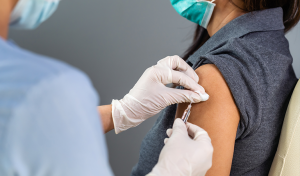
Links and product recommendations in the information provided here are advertisements of third-party products available on the website. PharmEasy does not make any representation on the accuracy or suitability of such products/services. Advertisements do not influence the editorial decisions or content. The information in this blog is subject to change without notice. The authors and administrators reserve the right to modify, add, or remove content without notification. It is your responsibility to review this disclaimer regularly for any changes.
While the COVID-19 pandemic continues unabated, some countries are doing better than others. Caseload, meaning the number of people affected, as well as the fatality rates, are higher in some countries than others.
So which countries have been able to banish COVID-19? And how did they accomplish the impossible? Read on to find out.
On 6th June, this tiny country announced that it has been able to eradicate coronavirus and no one in its population is infected. There has been no fatality.
By the first week of June, all the 18 people of the country who had contracted COVID-19 were declared healthy and COVID-free. The announcement came after 45 days of zero COVID-19 reports and since no one died of the disease in this country, Fiji has a 100% recovery rate.
It took Montenegro 69 days after its first case of COVID-19 to declare itself free from the dreaded virus. On 24th May, Montenegro became the first country in Europe to vanquish COVID-19.
This quaint West Indian country also reported only a few cases, just 15 to be specific, and all were cured by the latter half of May.
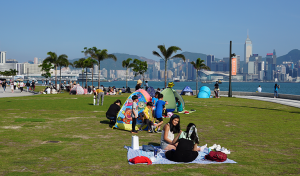
This archipelago of 115 islands on the Indian Ocean is famous as a tourist destination. Yet, it was able to withstand the devastation caused by COVID-19. There were only 11 cases of the virus and no one died from it.
One of the earliest countries to free itself from the clutches of COVID-19, Papua New Guinea declared its status as a corona-free country on May 4th. This country too has a zero fatality rate.
It’s not just the countries we mentioned, nations that were gravely affected by COVID-19 earlier like Hong Kong, Singapore, South Korea, New Zealand, Thailand and Switzerland are now showing a rapidly declining curve.

The Union Government has said that we are on our way to flattening the curve. According to WHO, India will reach its peak in July after which the cases will decline. Two vaccines are being tested right now and once the human trials have concluded, we might have protection from this dreaded disease.
Only if we stand together can we make our country free from the COVID-19 pandemic. Let us all cooperate with each other and observe safety measures to stay safe and healthy!
Stay home and stay safe by getting yourself tested from time to time.
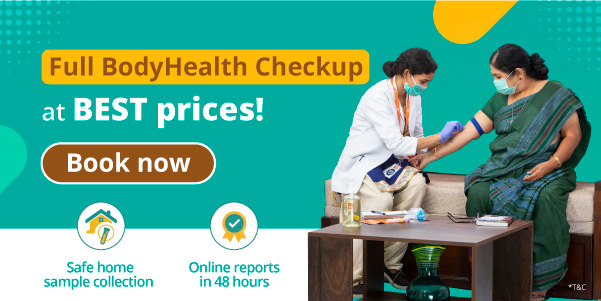
Disclaimer: The information provided here is for educational/awareness purposes only and is not intended to be a substitute for medical treatment by a healthcare professional and should not be relied upon to diagnose or treat any medical condition. The reader should consult a registered medical practitioner to determine the appropriateness of the information and before consuming any medication. PharmEasy does not provide any guarantee or warranty (express or implied) regarding the accuracy, adequacy, completeness, legality, reliability or usefulness of the information; and disclaims any liability arising thereof.
Links and product recommendations in the information provided here are advertisements of third-party products available on the website. PharmEasy does not make any representation on the accuracy or suitability of such products/services. Advertisements do not influence the editorial decisions or content. The information in this blog is subject to change without notice. The authors and administrators reserve the right to modify, add, or remove content without notification. It is your responsibility to review this disclaimer regularly for any changes.
The number of COVID-19 cases caused due to COVID-19 is rising worldwide, nearly 7 months after it was first detected. Being a respiratory pathogen, the virus affects both the upper and lower respiratory tract of humans.
With no known cure in sight and vaccine development still in process, panic has once again gripped everyone after a group of scientists have suggested findings that support the possibility of the COVID-19 virus being airborne. This means that the risk of transmission of the virus is much higher than what was originally thought.
As per the World Health Organisation (WHO), airborne transmission may be possible in specific circumstances and settings. These include settings in which medical procedures generate droplets (smaller than 5 microns) from patients such as bronchoscopy or disconnecting a patient from the ventilator. These droplets could be suspended in the air for some time before settling down on surfaces.
Till date, social distancing and hand washing are the measures suggested by the WHO in order to prevent people from contracting the disease.
Transmission of novel coronavirus occurs much more commonly through respiratory droplets than through surfaces/objects.
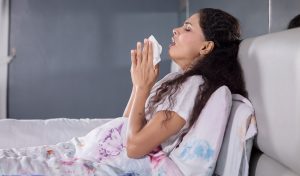
Transmission of virus can occur through direct, indirect, or close contact with infected people through saliva and respiratory droplets which are expelled when an infected person coughs, sneezes & talks. In these situations, respiratory droplets that include the virus can reach the mouth, nose or eyes of a healthy person and can result in infection. Indirect contact transmission involving contact of a person with a contaminated object or surface may also be possible.
Covid is very contagious and people who get infected with the coronavirus can spread it to others 2 to 3 days before symptoms start and are most contagious 1 to 2 days before they feel sick.
Dr. Ashish Bajaj, M.B.B.S., M.D. in Clinical Pharmacology and Toxicology
Airborne transmission can be explained as the spread of infectious droplets that are released in air over long distances and time. These transmissions can occur during medical procedures that generate droplets or through an infected individual.
A susceptible person could inhale aerosols and could become infected if the aerosols contain the virus in enough quantity to cause infection within the recipient. However, enough proportion of exhaled droplets that evaporate to generate aerosols is required to cause infection in another person is not yet known, but it has been studied for other respiratory viruses. Thus, much more research is needed given the possible implications of such a route of transmission.
The primary mode of transmission of SARS-CoV-2 is via exposure to respiratory droplets carrying the infectious virus from close contact or droplet transmission from presymptomatic, asymptomatic, or symptomatic individuals harboring the virus.
Dr. M.G. Kartheeka, MBBS, MD(Pediatrics)
There is still not enough or convincing evidence to prove that novel coronavirus is airborne. The experts believe that even if there is no ‘significant’ proof that COVID-19 can be transmitted through droplets. However, the experts suggest that the virus is more infectious in closed settings, without proper ventilation.
They also point out that the idea of droplet transmission due to droplets hanging in the air for a long period of time is capable of infecting a healthy person.
Now more than ever, it is absolutely necessary that you always wear a face mask when you are out of the house.
Asymptomatic patients can be carriers and spreaders of the virus as well. Hence it is essential to maintain social distance (more than 6 feet) when you are outdoors.

Older adults and people with serious chronic medical conditions are at higher risk of serious illness.
Wash your hands with soap or water/ alcohol-based sanitizer frequently. Avoid touching your nose, mouth, or eyes. Make sure that you cover your nose and mouth while sneezing or coughing.
There are chances that a person can get COVID-19 by touching a surface or object. Use common household disinfectants to clean and disinfect frequently touched surfaces such as tables, doorknobs, handles, phones, and switches.

The virus that causes COVID-19 can lead to some flu-like symptoms, such as aches, fever, and cough. If you experience any of these symptoms, you should get in touch with your doctor immediately.
We are yet to completely understand the extent of airborne transmission of coronavirus due to poor ventilation & through infect or an asymptomatic person. Many such unanswered questions about transmission of the virus are still pending and research to seek these answers is ongoing and encouraged.
Disclaimer: The information provided here is for educational/awareness purposes only and is not intended to be a substitute for medical treatment by a healthcare professional and should not be relied upon to diagnose or treat any medical condition. The reader should consult a registered medical practitioner to determine the appropriateness of the information before consuming any medication. PharmEasy does not provide any guarantee or warranty (express or implied) regarding the accuracy, adequacy, completeness, legality, reliability, or usefulness of the information; and disclaims any liability arising thereof.
Links and product recommendations in the information provided here are advertisements of third-party products available on the website. PharmEasy does not make any representation of the accuracy or suitability of such products/services. Advertisements do not influence the editorial decisions or content. The information in this blog is subject to change without notice. The authors and administrators reserve the right to modify, add, or remove content without notification. It is your responsibility to review this disclaimer regularly for any changes.
The COVID-19 pandemic seems to be getting more dangerous every day. The country is reeling under a high caseload. Hence, all of us are being urged to be extremely cautious and maintain all precautions to prevent being infected or passing on the virus to our loved one.
At this juncture, a vaccine is the only thing that can save the day. For quite a few days now, we have been hearing reports on how India is making rapid strides in developing a vaccine. The name COVAXIN is doing the rounds. What is it and when can we expect it? Read on to find out.
COVAXIN is India’s first attempt at creating a vaccine that will successfully immunize the human body against the SARS-CoV-2, the virus that causes COVID-19. It is actually an ‘inactivated’ vaccine made from killed COVID-19 viruses that will not harm the body when injected but will teach your immunity to recognise and kill COVID-19 virus if it enters your system by producing antibodies.
The vaccine is being developed by the ICMR’s (Indian council of medical research) National Institute of Virology wing as well as Bharat Biotech.

Permission has been granted by the Drug Controller General of India (DCGI) to carry out human trials of COVAXIN.
The animal trials have concluded and there will have to be 3 phases of human trial before the vaccine is ready for launch. The DCGI has issued a permit to conduct only Phase 1 and Phase 2 of human trials.
In a letter recently published by the Indian Council of Medical Research, Nizam’s Institute of Medical Sciences (NIMS), Hyderabad was selected as a trial site among a total of 12 Institutes (including the Patna and Delhi AIIMS) where the ICMR would be conducting human trials.
The trial at the Nizam’s Institute of Medical Sciences started on Tuesday, 8th July 2020 and is underway. At least 30 people will be screened and given the vaccine. Audio and visual consent of the persons will be sought before the trial begins.
According to the ICMR, the drug will be administered to 1100 people in different trial sites over the upcoming days and there will be two phases of human trials.
The director of NIMS has said that samples of blood will be drawn from healthy people and sent to New Delhi’s designated labs after which they will be examined by experts and the first-ever shot of COVAXIN will be administered.
The enrolment procedure started on 7th July.
Covaxin is inactivated coronavirus vaccine called Covaxin. India authorized the vaccine for emergency use on Jan. 3, and trial results later showed the vaccine has an efficacy of 78 percent
Dr. M.G. Kartheeka, MBBS, MD(Pediatrics)
There is another vaccine being developed by Zydus Cadila and Bharat Biotech called Zy-Cov-D. It received a nod from the DCGI to carry out human trials. Zydus Cadila said that it has also procured permission from Mexico to test one of its products to see how effective it can be in COVID-19 management.
The US government is conducting Phase 3 human trials for 3 vaccine companies under the banner of Operation Warp Speed.
People with acute infection or fever or who are allergic to any components of covaxin, or those who had a severe allergic reaction to the first dose of this vaccine should not take covaxin.
Dr. Ashish Bajaj, M.B.B.S., M.D. in Clinical Pharmacology and Toxicology

According to the ICMR, efforts are on to make the vaccine ready by 15th August 2020.
Remember to not let your guard down because the pandemic is still raging. Follow precautions strictly to stay safe and healthy.
Next Page »« Previous Page